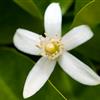The Nature has painted itself yellow
As winter paved the way for spring,
Vasant Panchami has arrived
With wisdom ready to spread its wings!

On this auspicious occasion, on the threshold of Spring, T h e C r a z y C r e a t i v e s, bring to you the Fantastic FIVE Facts of Vasant Panchami.

Rituyon Ka Raja: Vasant
With spring entering to spread vibrancy, Vasant Panchami is celebrated with full zest across the globe. According to the Gregorian calendar, it is observed on the fifth day of Magh, which occurs between the months of January and February; hence, known as, Vasant Panchami.
It is considered as the king of all seasons, owing to the lush green aura and its majestic appearance. It marks the end of winter and hence the blossoming flowers and yellowish green leaves symbolize the beginning of life after a dreary season.

50 Shades of Yellow
Yellow color is an important aspect of this festival as it symbolizes nature and spreading the vibrancy of life. Everyone dresses in yellow attire. Yellow colored flowers are spread from one person to another, along with being offered to Gods. Special delicacies, such as saffron porridge, are prepared, consisting of flour, sugar, nuts and cardamom powder. Addition of the saffron strands produces vibrant yellow color and moderate scent.
During this pomp, the harvest crops are shining the yellow hues, with mustard flowers opening their buds.

Mythological Folklore
A popular folklore is based on how Lord Krishna passed a boon to Goddess Saraswati for being venerated on this day.
One more legend discusses about how Vasant Panchami was commemorated in the royal residence of Kamadeva. People would dance in synchronization to the beats of dhol with complete enthusiasm. They would dress up in customized clothings. Female dancers compile flowers and mango leaves from the royal garden. Melodious songs were based on the romance of Lord Krishna and Radha or the gopis of Braj Bhoomi. In the end, the dancers applied smeared flowers with red color powder. They received their token of appreciation from the royal ladies. Although Kamadeva is not revered as much as Goddess Saraswati is, celebrations are arranged for him during this day. The theme of love is popular as this day is considered a perfect day for weddings.
Besides Goddess Saraswati, other important deities worshipped are Lord Shiva and Lord Vishnu.

The Diverse Festival
In West Bengal and other eastern states, this festival is known as "Saraswati Puja" or "Sri Panchami". Goddess Saraswati is considered as the "Goddess of Knowledge Wisdom and Arts". Often depicted as calm and poised, she appears in creamy yellow dress with her abode being either lotus or a peacock,. Her sculptures are accessorized with yellow jewelry and clothes. Educational materials such as pens, pencils and notebooks are offered to the Goddess, which is considered as a blessing for pupils.
|| Yaa Devi Sarva Bhuteshu
Shakti Roopena Samisthitaha
Namas Tasayi Nama Tasayi
Namas Tasayi Namo Namah ||
Religious songs are harmonized for Goddess Saraswati, along with prayers and wishes, in Uttar Pradesh. While Punjab and Bihar celebrate this feast as the "Festival of Kites" where the kites soar high in the air, Uttarakhand tends to glorify Mother Earth and the harvest season.

The Panchami Connect
Whether you're living "saat samundar paar" or anywhere else, this festival will always have a special connection to our Indian roots and culture. Whether solemnizing the scent of sarson or delving back to the beats of dhol, or enjoying the calls of Kai Po Che, it is something that will remain forever nostalgic.

What's your Vasant Panchami?

caffeineaddict


































comment:
p_commentcount